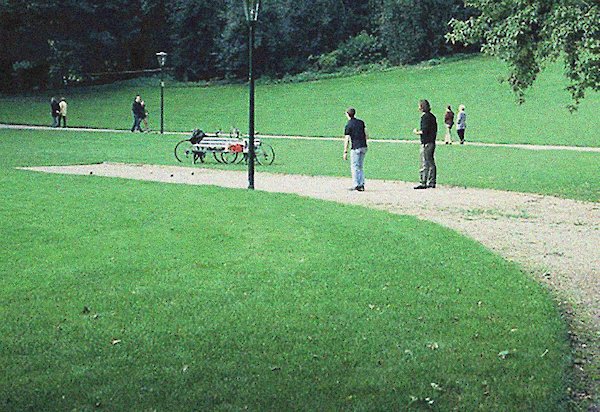Speakers
Alenka Korenjak
The Ma2 group explores degraded urban situations, addresses the problems of public open space and searches for new modes of utilisation. In 2004 the group realised their first project, entitled “ProstoRož”, creating temporary installations highlighting the potential of courtyard situations in the centre of the old town. In the following year the group suggested the redefinition of urban green spaces through the installation of innovative park equipment.
ProstoRoz
Through the ProstoRož project a cluster of slight interventions is being launched into the urban space of Ljubljana shifting attention towards the state and importance of the city‘s open space. It was only in the 20th century that Ljubljana swiftly changed from a provincial town into a relatively small capital city. As a result its centre became engulfed by oversized housing areas scattered with residue rural structures.
Big open spaces in the centre are scarce, and those left among suburban housing areas slowly turn into car parks. City-dwellers spending their free time amidst the surrounding hills slowly forget about open spaces inside their city. Through ProstoRož, we try to point out that there are far more public spaces in Ljubljana than we are inclined to think and how a few slight interventions could bring them back to life.
In the last few years, Ljubljana evolved into a vibrant and much visited European capital, but at the same time grew apart from the needs of its inhabitants, thus forcing them to move to the outskirts. To devise a long term solution to this dichotomy, ProstoRož aims not at occasional installations but towards a shift in the
perception of the city in the minds of individual inhabitants as well as the city council.
The 2006 ProstoRož, the third one in a row, dealing with Lubljanica and city’s public spaces along the river, will see our vision backed by financial support of the Ljubljana Tourism Department. It will seek to fuse the needs of the inhabitants of Ljubljana with those of its visitors and make clear that the future of Ljubljana may not be as dark as it seems, if only each and everyone contributed their small share in developing the city. Hopefully, in the near future, the city council will come to perceive ProstorRož not as an act of criticism but as an impulse towards long-term changes far beyond minute interventions of three young architects.
